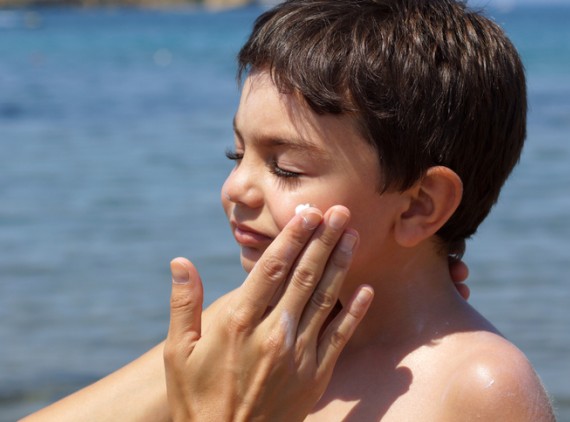Summer brings many opportunities for fun and adventure, but in Phoenix, high temperatures may range from 107 to 113 degrees Fahrenheit (42 to 45 degrees Celsius), which can cause an increased potential for heat-related illness. For those participating in outdoor activities, following are some tips to make the most out of the warm weather in Phoenix and find the balance to keep your kids safe from the sun’s harmful rays:
1. Seek Shade
The sun’s rays are most powerful during the peak hours of the day, from 10 am – 4 pm. Plan outdoor activities in the early morning or late afternoon. Seek shade or use an umbrella. It’s important to remember that the sun’s rays reflect off surfaces such as sand, rocks and water.
2. Use Sun Protective Clothing
Tightly woven fabrics or materials designed with ultraviolet protection factor (UPF) can protect the skin and minimize the amount of sunscreen needed. Hats are incredibly effective in keeping you cool and providing shade, especially those with broad brims that protect the face, neck and ears. Neck coverings can provide additional protection. And don’t forget about your eyes — look for sunglasses with UV protection to shield them from harmful rays.
3. Sunscreen and Sunblock
Sunscreens and sunblocks are an excellent way to protect the skin from harmful ultraviolet damage. Choose a sunscreen with “broad-spectrum” coverage, meaning it protects against UVA and UVB rays. Sunscreens that are rated SPF 30 or higher are best. People typically use a fraction of the amount recommended, so be generous when applying sunscreen. Re-apply every 2 hours and even more frequently if swimming or sweating. Young infants should avoid direct sunlight if possible. Mineral-based sunscreens contain zinc oxide or titanium dioxide. These may be preferred for infants and young children, especially those with sensitive skin. Chemical sunscreens contain active ingredients, including avobenzone, homosalate, octocrylene, oxybenzone and other ingredients. The best sunscreen is the one you or your child is willing to wear.
4. Sunscreen Controversy
You may have heard various reports about the adverse effects of sunscreen ingredients. For example, oxybenzone, a popular chemical ingredient, is reported to have caused bleaching in coral reefs and hormonal changes in lab animals. However, there has been no conclusive evidence that sunscreens cause harm to humans and more research is needed It’s important to remember that sunscreens in the U.S. are FDA-regulated, and we know UV exposure is a major risk factor for skin cancer. The use of sunscreen is widely supported by many organizations, including the American Academy of Pediatrics and the American Academy of Dermatology.
5. How to Manage a Sunburn
Sunburns increase the risk for dehydration, so make sure your child is adequately hydrated. Apply moisturizers right after bathing. Applying an ointment or cream that has been stored in the refrigerator can be soothing. Over-the-counter hydrocortisone can be used to decrease inflammation. After consulting with your doctor, consider ibuprofen for pain control and inflammation. It’s important to stay out of the sun until the skin is fully healed.

